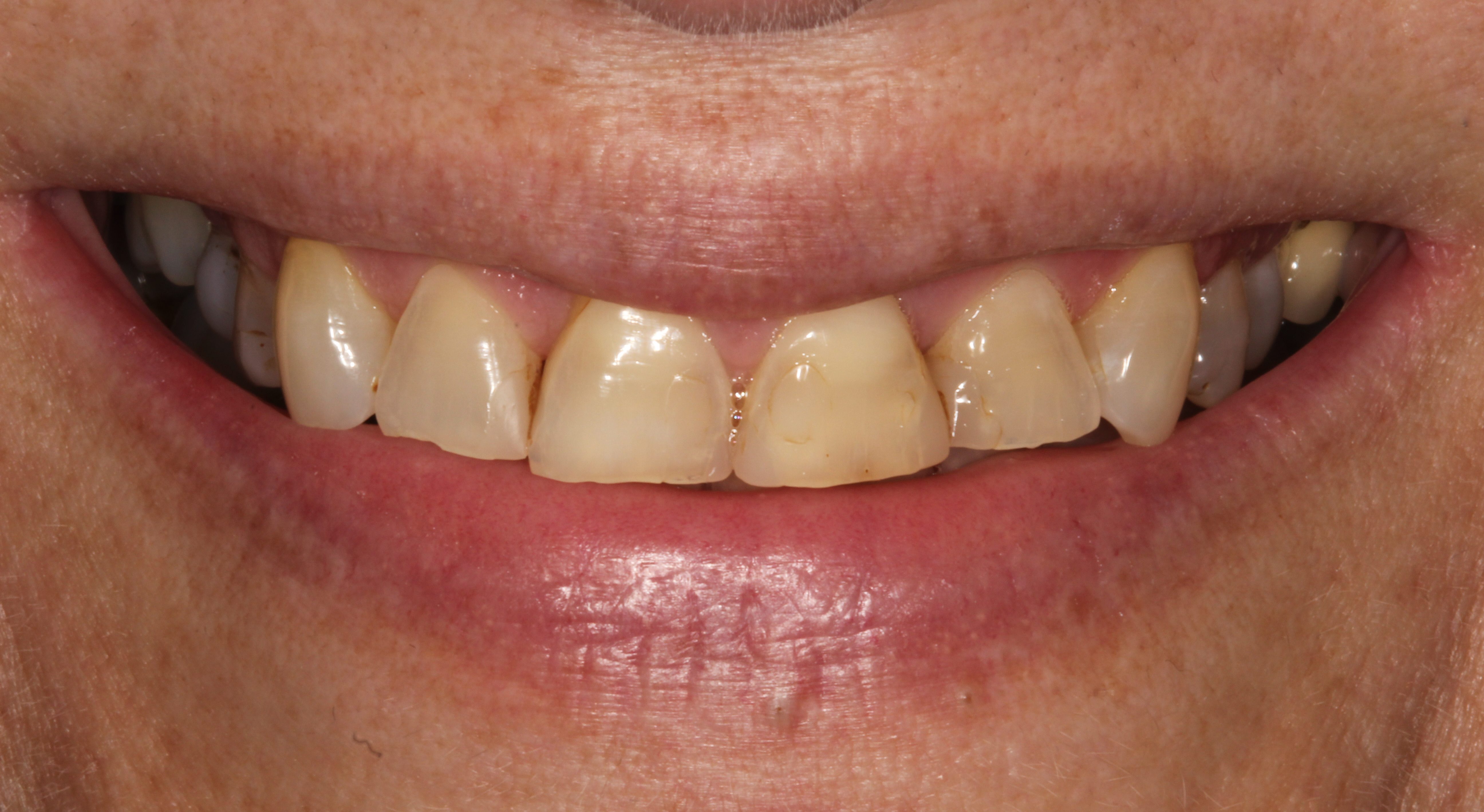
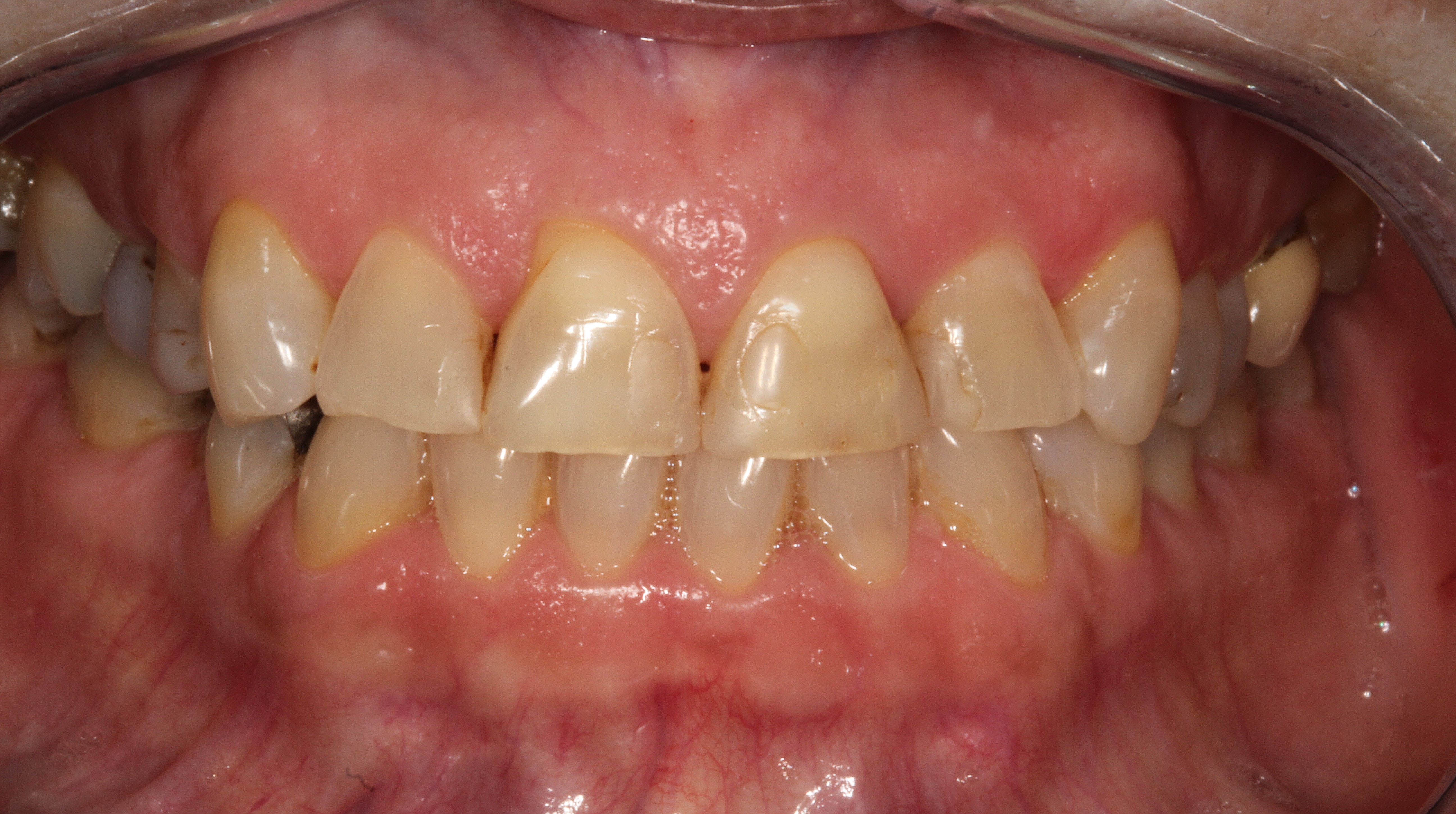
Joanne Gracey walks through a patient wanting improvement in the shape and colour of their upper anterior teeth using ultra-translucent zirconia.
The patient presented with heavily restored, discoloured and worn upper incisors. The patient requested an improvement in the shape and colour of the upper anterior teeth.
Options for treatment:
- Direct composite restorations – this would include the replacement of large existing composites and secondly the provision of direct composite veneers
- Ceramic veneers
- Full coverage restorations/crowns.
The preferred option was the provision of crowns on the upper incisors. It was felt that the provision of direct composite restorations would be a short to medium-term solution due to staining and failure due to lack of retention of the large composites.
Veneers are considered inappropriate owing to the size of the composite restorations and therefore the lack of enamel to achieve sufficient bonding of the veneers to tooth substrate.
Clinical stages
Teeth are prepared as per the ultra-translucent zirconia preparation guide and taking into consideration the following:
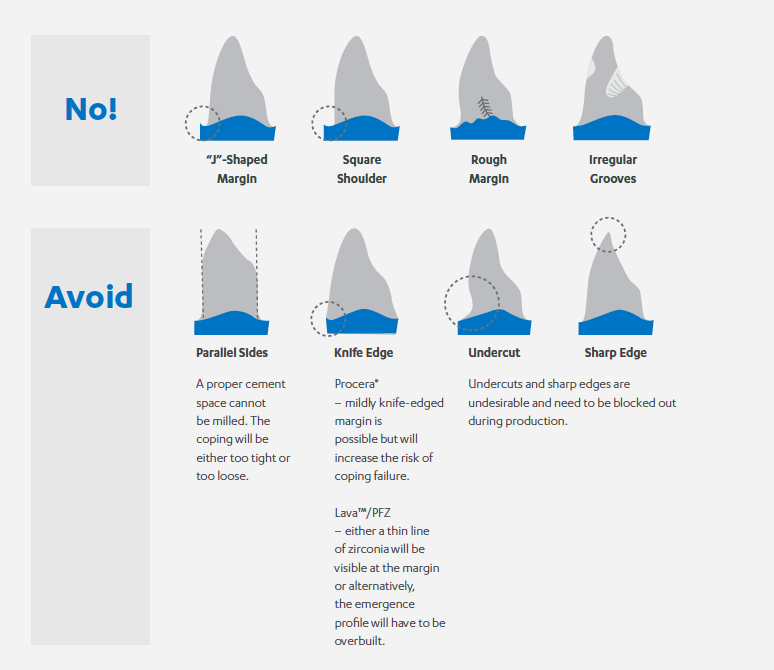
Impressions are taken using the PVS heavy body/light body impression material in a rigid tray. A double cord technique is used for gingival retraction. Silicon bite registration is taken in the intercuspal position and bis-acryl temporary crowns provided. Furthermore, shade is taken under good lighting conditions and approved by the patient.
Techniques and materials used
Ultra-translucent zirconia is chosen because the teeth are not heavily discoloured and there are no metal posts in place. This material requires less tooth reduction than traditional porcelain-fused-to-metal (PFM) restorations and offers a desirable combination of aesthetics and flexural strength.
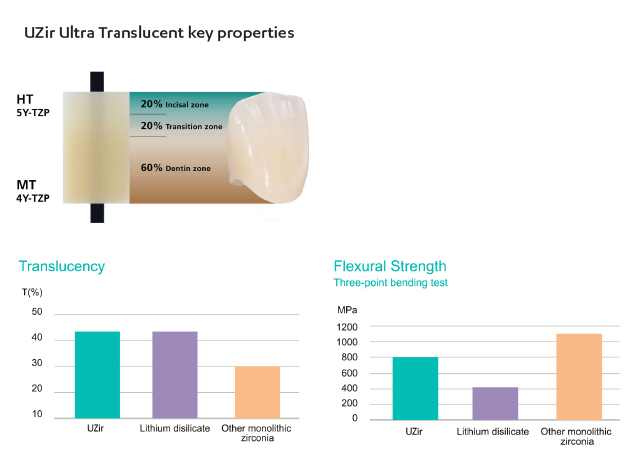
The restorations are designed and manufactured by Southern Cross Dental using CAD/CAM techniques, which ensured accuracy of fit through the application of cutting-edge milling technology.
The crowns are fabricated to the bisque stage, with the dentist approving their morphology, before they were glazed to finish.
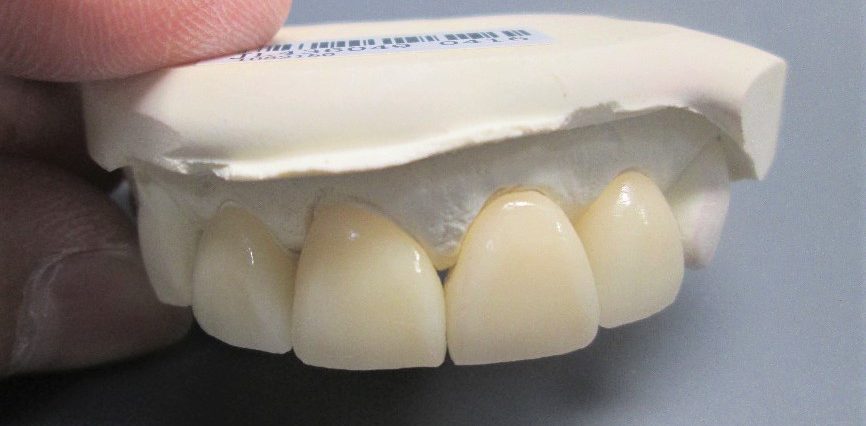
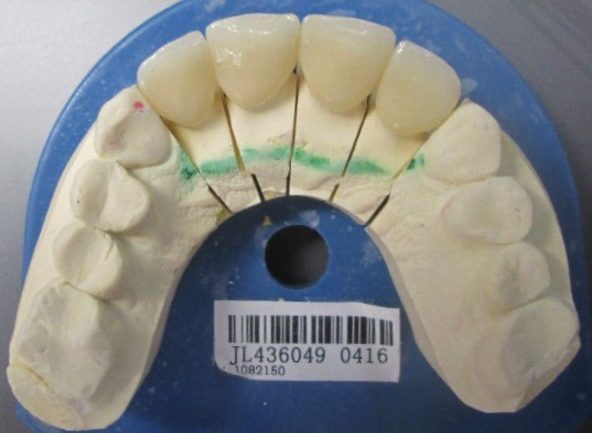
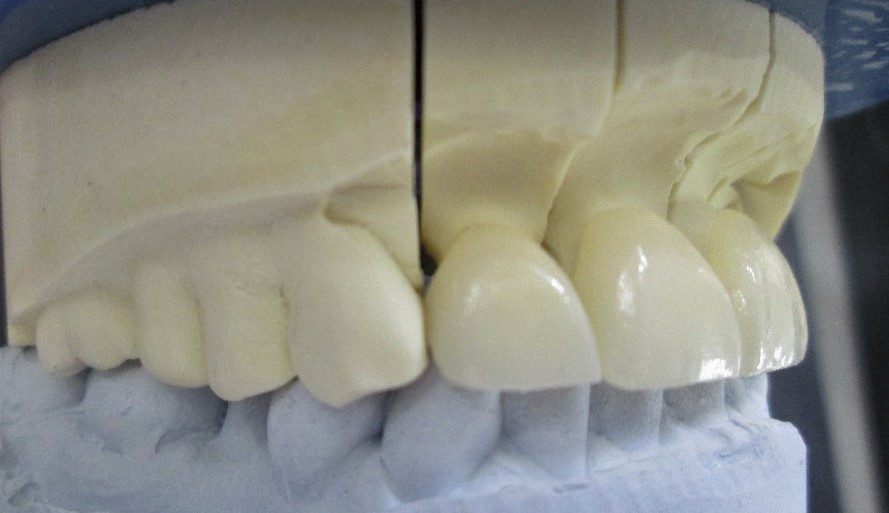
The fitting surface of the ultra-translucent zirconia restorations was also sand blasted with a 50µm aluminium oxide grit. This is to enhance surface adhesion to resin cement.
Finally, we checked the occlusion and provided oral hygiene instructions to the patient.
Dentist feedback on the ultra-translucent zirconia crowns
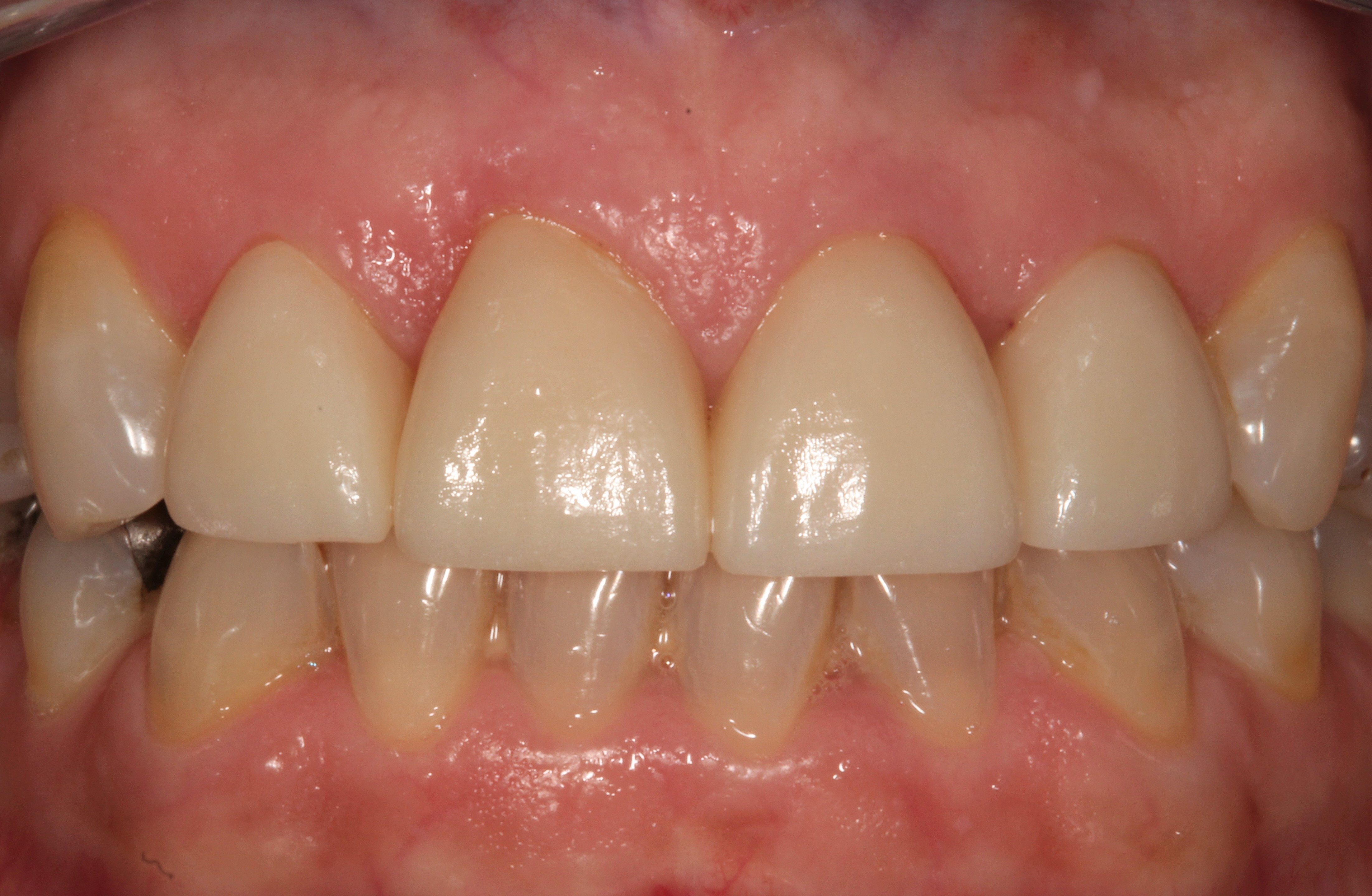
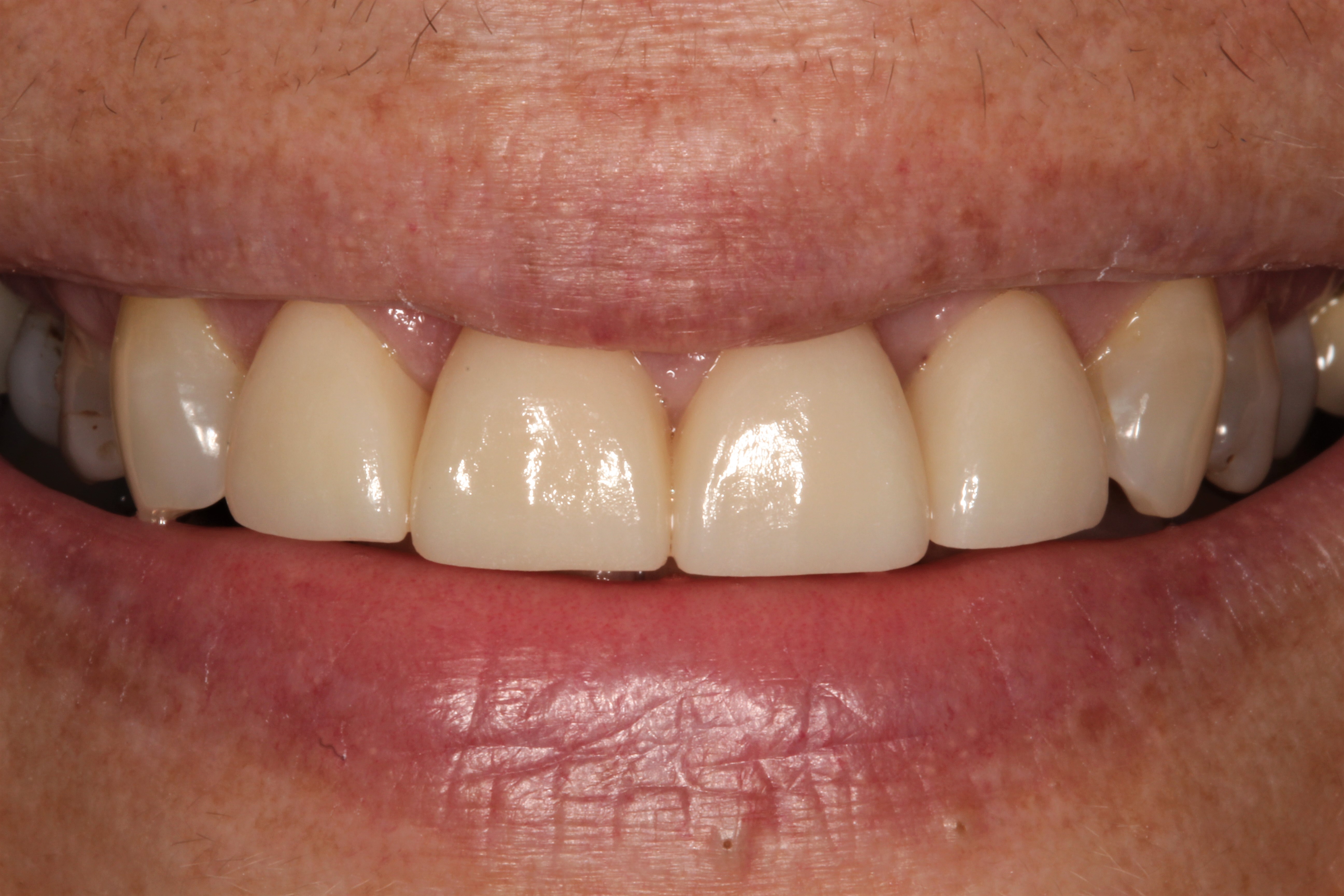
‘I was delighted with the fit, margins and aesthetics of the ultra-translucent zirconia crowns. The need for less tooth preparation, especially in a case like this, is particularly advantageous. The patient is equally delighted with the result.’


